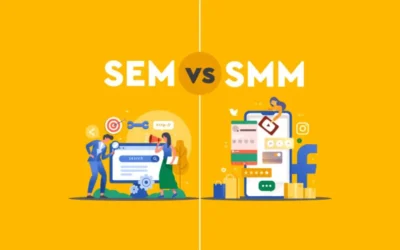Difference between social media marketing and search engine optimization


Social media marketing (SMM) and search engine optimization (SEO) are both important digital marketing strategies, but they have some key differences.
SMM involves using social media platforms such as Facebook, Twitter, Instagram, and LinkedIn to promote products or services, build brand awareness, engage with customers, and drive traffic to a website. This may include creating and sharing content, running social media ads, responding to customer queries, and monitoring social media analytics.
On the other hand, SEO involves optimizing a website’s content and structure to improve its visibility and ranking in search engine results pages (SERPs) for specific keywords or phrases. This may include researching keywords, optimizing website content, improving website speed and performance, building backlinks, and tracking and analyzing website traffic and rankings.
what is social media marketing?
Social media marketing (SMM) is a form of digital marketing that involves using social media platforms such as Facebook, Twitter, Instagram, LinkedIn, and others to promote products, services, or brands. SMM is a powerful way for businesses to reach and engage with their target audience, build brand awareness, and drive website traffic or sales.
SMM strategies can include creating and sharing content, such as posts, images, videos, or stories, that are designed to attract and engage social media users. Businesses may also run social media ads, such as sponsored posts or display ads, to reach a broader audience and increase brand visibility. Additionally, SMM involves interacting with social media users by responding to comments, messages, or reviews, and using social media analytics to track and measure the effectiveness of SMM campaigns.
Overall, SMM can help businesses to build stronger relationships with their customers, increase brand loyalty, and ultimately drive more revenue.
Strategies Social Sedia Marketing
Social media marketing (SMM) involves various strategies that businesses can use to effectively promote their products, services, or brands on social media platforms. Here are some common SMM strategies:
- Content creation and sharing: Creating and sharing engaging content on social media is a key SMM strategy. This may include posts, images, videos, or stories that are designed to inform, entertain, or inspire social media users. Businesses can use a variety of content formats and themes to keep their audience engaged and interested.
- Social media advertising: Paid advertising on social media platforms can be a powerful way to reach a broader audience and promote products or services. Businesses can use various types of social media ads, such as sponsored posts, display ads, or video ads, to target specific demographics, interests, or behaviors.
- Influencer marketing: Collaborating with social media influencers can help businesses to reach a broader audience and increase brand awareness. Influencers can help to promote products or services through sponsored posts, reviews, or endorsements.
- Social media engagement: Engaging with social media users by responding to comments, messages, or reviews can help to build stronger relationships with customers and increase brand loyalty. It’s important for businesses to monitor their social media accounts and respond promptly to any queries or feedback from users.
- Analytics and tracking: Using social media analytics tools to track and measure the effectiveness of SMM campaigns is crucial for optimizing future strategies. Businesses can use metrics such as engagement rates, click-through rates, or conversion rates to evaluate the success of their SMM efforts.
Overall, an effective SMM strategy requires a mix of different tactics and a deep understanding of the target audience, platform algorithms, and market trends.
In summary,
while both SMM and SEO are important for digital marketing, SMM focuses on promoting and engaging with customers on social media platforms, while SEO aims to improve a website’s ranking and visibility in search engine results pages.




